Activity
Mon
Wed
Fri
Sun
Oct
Nov
Dec
Jan
Feb
Mar
Apr
May
Jun
Jul
Aug
Sep
What is this?
Less
More
Memberships
Elite Architects AI
1.2k members • Free
AI Automations by Kia
18k members • Free
AndyNoCode
21.1k members • Free
GHL Blueprint
871 members • Free
AI Automation Agency Hub
248.8k members • Free
AI Automation (A-Z)
99.8k members • Free
AI Automation Society
144.4k members • Free
Vertical AI Builders
9.6k members • Free
Automation Incubator™
40.3k members • Free
18 contributions to AI Automation Society
🔥 You’re Not Losing Clients Because Your Product Sucks… You’re Losing Them Because You’re Slow
Here’s what’s silently killing 7-figure potential businesses: ✅ Leads come in ❌ No instant response ❌ No lead segmentation ❌ Sales rep follows up 3 days later By that time? The lead's already gone — probably to your competitor. 💡 Using GoHighLevel (or any modern CRM), here’s a real-time lead follow-up system you can set up in under 30 minutes: 🔁 Real-Time Lead Follow-Up System 🎯 GOAL: Convert more leads by responding instantly, following up smartly, and notifying your team without lifting a finger. ✅ Step-by-Step Flow: 📥 Trigger: Lead submits a form or books a call ⏱️ 0 Seconds Later: → SMS Sent Instantly: “Hey {{first_name}}, got your request. Here’s the link to pick a time that works best.” → Email Sent Simultaneously: Personalized intro + booking link + reminder of your offer. 🕒 2 Hours Later: → IF No Booking: Send SMS: “Just making sure you didn’t miss this 👇 [booking link]” 🧠 IF Lead opens 2+ emails or views pricing page: → Add tag: Hot Lead 📣 Slack Notification: Sales rep gets pinged instantly: “🔥 {{Lead Name}} viewed pricing page twice. No call booked yet — follow up?” ✅ CRM Automatically Updates: Lead moved from “New Lead” → “Follow-Up Needed” — no manual dragging. ✅ Results We’ve Seen: 🔹 48% higher reply rate 🔹 35% fewer no-shows 🔹 Sales reps only focus on high-interest leads 🔹 Zero manual chasing or dragging in the CRM This isn’t just automation — it’s a real-time, behavior-based follow-up system that feels personal, but runs 24/7 without your team lifting a finger. .
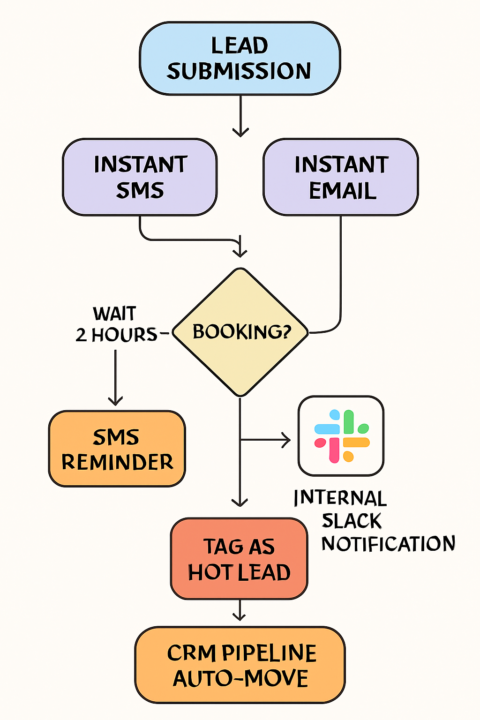
How I Built a Gmail → Asana Task Machine (and Saved Hours Every Week)
⚙️ From Inbox to Asana — Fully Automated Task Creation Tired of missing important emails just because no one turned them into actionable tasks? Here’s a solution I built for fast-moving teams 👇 Whenever a relevant email hits your Gmail inbox, this automation: ✅ Reads the email (subject + body) ✅ Extracts key details ✅ Instantly creates a fully structured task in Asana, including: 1. Task title 2. Description 3. Due date 4. Assignee 5. Subtasks 🧩 Tools Involved: Gmail – Trigger (new email received) n8n / Zapier / Make.com – Workflow automation Asana API – Task creation engine 🔁 How It Works (Step-by-Step): 1️⃣ Trigger: New email arrives in a specific Gmail label (e.g., “To-Asana”) 2️⃣ Filter: Checks sender, subject, or keywords to qualify the email 3️⃣ Parse Email: Extracts subject → Task title Email body → Task description Lists or bullets → Subtasks Dates → Due date Mentions → Assignee mapping 4️⃣ Format Data: Organizes the info to match Asana’s task schema json { "name": "Follow up on client proposal", "notes": "Client requested a revision on the Q3 budget...", "assignee": "[email protected]", "due_on": "2025-07-30", "projects": ["1234567890"], "subtasks": [ { "name": "Revise budget" }, { "name": "Send updated version" } ] } 5️⃣ Create Task in Asana: Pushes the structured data directly into the assigned project 6️⃣ (Optional): Sends a Slack or email confirmation once the task is created 🧠 Bonus Smart Features: AI-powered parsing for long emails (OpenAI integration) Auto-tagging based on urgency or content Multiple assignees based on context File/attachment inclusion from the original email 🚀 Real-World Use Cases: Client services: Convert client emails into trackable tasks Sales: Never miss a lead follow-up Project managers: Reduce manual admin and increase clarity
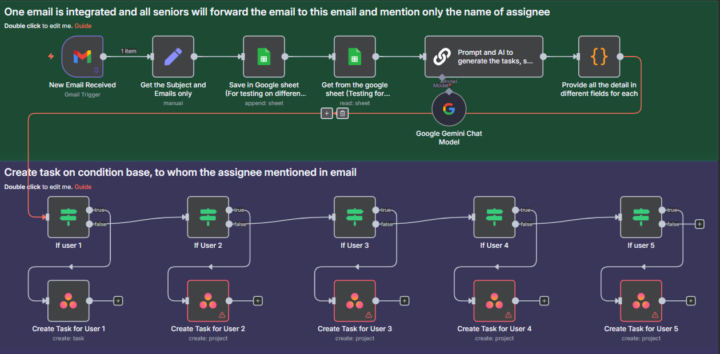
🧠 Build Automations That Only Trigger When Prerequisites Are Met
Too many automations move fast — but not smart. 💡 Precision beats speed when the goal is reliability, consistency, and customer trust. Here’s how to make sure your automations only run when the groundwork is done 👇 ✅ Why Prerequisites Matter 🔒 Prevent errors Avoid incomplete actions, missing data, or skipped steps. 🧩 Keep processes logical Trigger actions only in their proper business context. 📊 Improve data quality Validate that required fields, approvals, or conditions are in place before firing automations. 🔧 How to Build Prerequisite-Driven Workflows 🗂️ 1. Define Clear Conditions What must be true before this automation runs? (Example: Form completed, deal marked “Closed Won”, approval granted.) 🧠 2. Use Conditional Logic In tools like Zapier, Make, or n8n, build smart logic like: IF payment received AND contract signed → THEN send onboarding email 🔁 3. Stack Dependencies Sequence multi-step automations to ensure each action depends on a completed step. 🚨 4. Add Fail-Safes Build error-handling logic or alerts for missing prerequisites to avoid silent failures. 📦 Real Example: Sales Handoff Automation 🔑 Prerequisite: Deal marked “Closed Won” All contract fields are filled ⚙️ Triggered Action: Automatically generate onboarding tasks for operations ✅ Outcome: No premature handoffs Zero missing details Smoother client onboarding 🧠 Keys to Automation Success ✔ Design with dependencies—not just triggers ✔ Test for edge cases and skipped steps ✔ Regularly review and update your workflow conditions 📣 Bottom Line: Smart automations wait until they’re needed. They don’t just do things—they do the right things, at the right time. Make your workflows smarter, more predictable, and trusted.
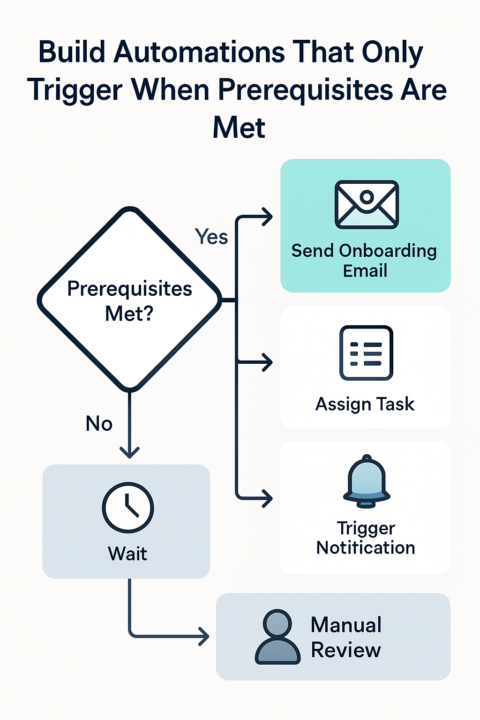
How Mapping Lead Journeys in Your CRM Uncovers Hidden Drop-Off Points
Most lost deals aren’t random—they’re the result of friction or disconnects somewhere along the customer journey. Mapping lead journeys inside your CRM doesn’t just track progress; it reveals exactly where and why potential clients slip away. Why Lead Journey Mapping Matters Makes drop-off visible: Visualizing each step lets you spot the precise stages where leads lose interest or stall. Turns guesswork into data: Instead of speculating, you get concrete evidence on where leads disengage. Guides targeted improvements: Insights uncover exactly which touchpoints or hand-offs need attention. Typical Drop-Off Triggers Revealed by Mapping Unanswered emails or follow-ups Long delays after demos or proposals Generic messaging at key decision points Missed hand-offs between sales and onboarding Confusing next steps or unclear value How to Map and Analyze Lead Journeys List Every Stage: From initial contact to closed deal, identify each touchpoint in your CRM pipeline. Track Transitions: Use CRM tags and pipeline stages to timestamp when leads move—or don’t move—to the next step. Visualize the Funnel: Use charts or dashboards to display where leads cluster or vanish. Investigate High-Exit Points: Look for patterns—are losses consistent at a certain step? Test and Optimize: Adjust the process, messaging, or timing where drop-offs occur, then measure if conversion rates improve. The Value You Unlock Higher conversion rates by patching “leaks” where you lose prospects Smoother experience for leads—less confusion, more clarity Data-driven sales process improvements over time Bottom line: Mapping lead journeys in your CRM turns the invisible into actionable insight—so you can fix what really matters, not just what’s easy to see.
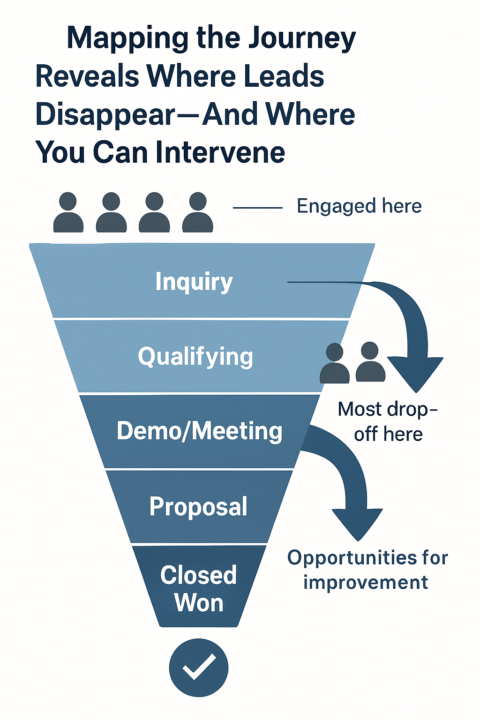
Why Automation Workflows Should Reflect Real Business Processes—Not Just Tech Possibilities
Automation is powerful, but it’s not a magic wand. A common trap: building workflows just because the tech allows it. True value comes when automation is a digital mirror of real business processes—not a patchwork of cool features. What happens if you don’t align? · Automations run, but business goals stall · Teams bypass workflows (‘shadow processes’) · You fix tech issues constantly, instead of moving forward What does aligned automation look like? · Every trigger, task, and message maps to an actual customer or team need · Manual “exceptions” are built in, not ignored · Data flows support real decisions, not just dashboards The best automations don’t just replace work. They optimize how your business runs
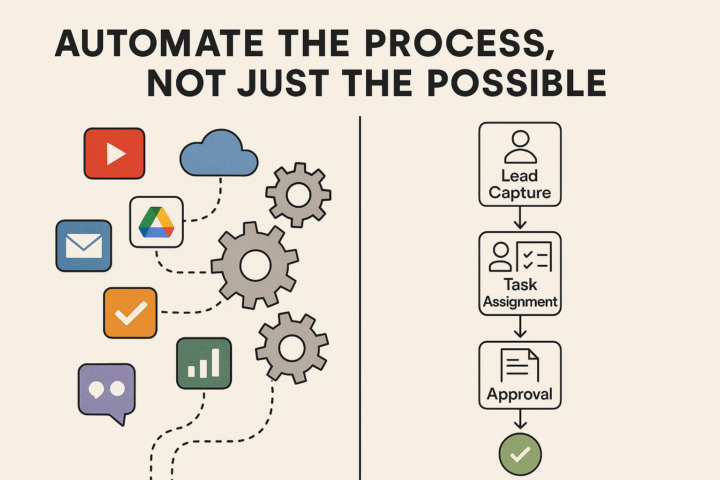
1-10 of 18
@waqas-khattak-5292
CRM Specialist
Automation Engineer (Code / No-Code)
Problem Solver
System Engineer
Tools : GHL, Hubspot, N8N, Make.com, Zapier, Jira, Asana, Airtable
Active 8d ago
Joined May 2, 2025
Pakistan
Powered by

